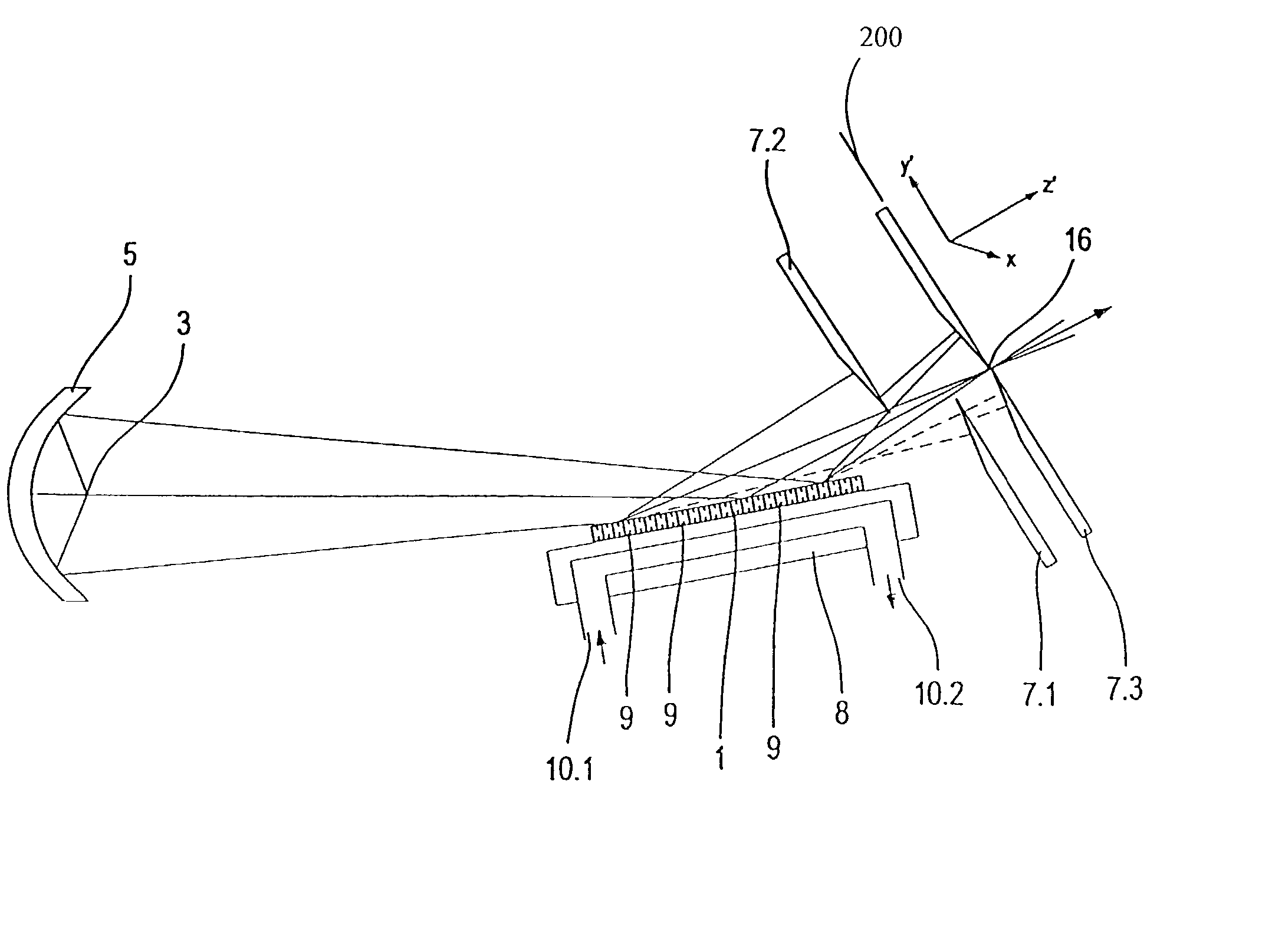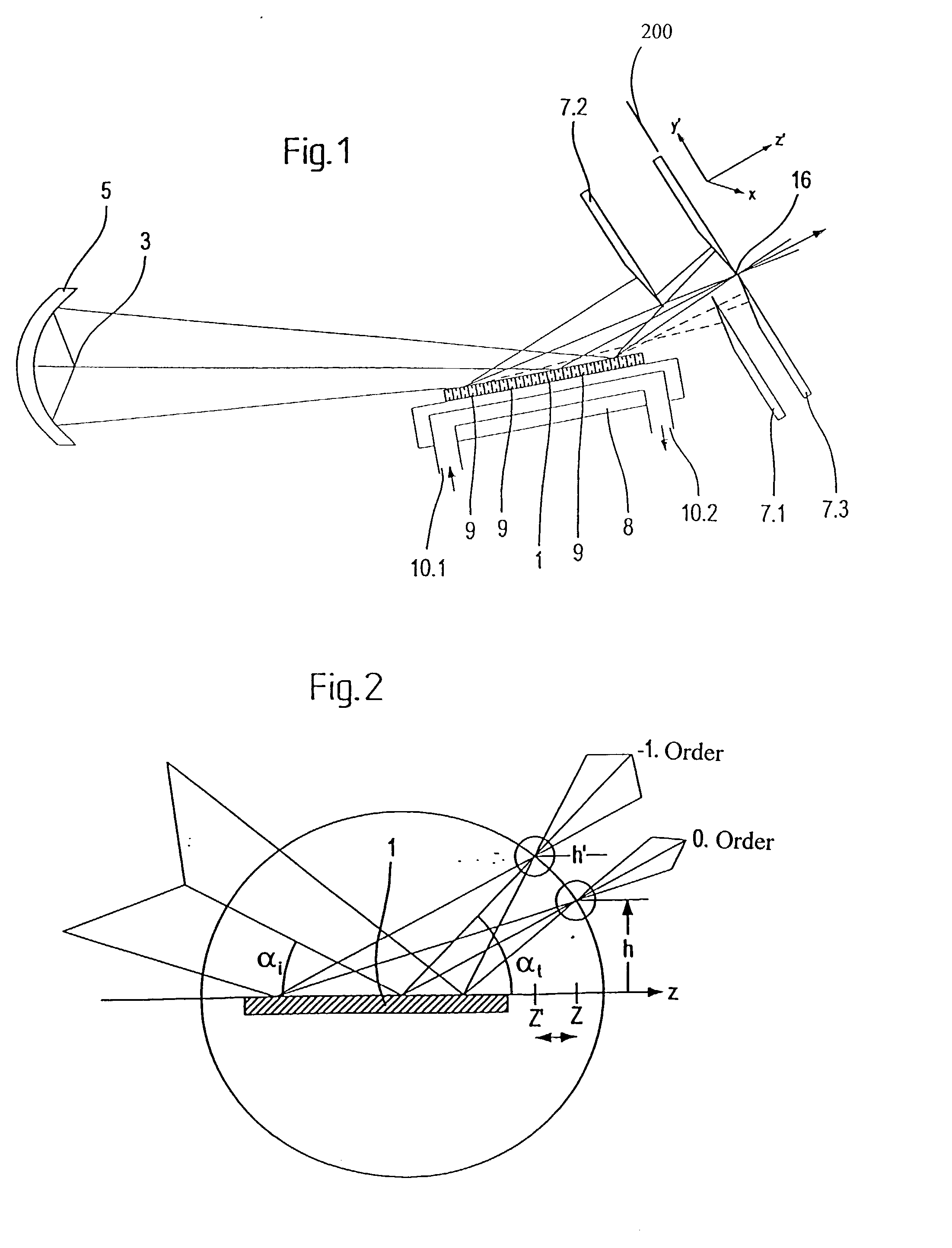Illumination system with a plurality of individual gratings
a technology of individual gratings and gratings, which is applied in the direction of optical radiation measurement, instruments, spectrometry/spectrophotometry/monochromators, etc., can solve the problems of unwanted exposure, large light loss of filters, and easy disruption
- Summary
- Abstract
- Description
- Claims
- Application Information
AI Technical Summary
Benefits of technology
Problems solved by technology
Method used
Image
Examples
Embodiment Construction
[0052] FIG. 1 shows a grating element 1 with a plurality of individual gratings 9 in a beam path of an illumination system. Individual gratings 9 are arranged one after the other in the beam direction. Light from a light source 3 is gathered by a collecting component, a collector 5. Collector 5 in this example is an ellipsoidal mirror, which produces an image of light source 3. A collimated light bundle with an aperture of around NA=0.1 is deflected in grazing incidence by grating element 1 after collector 5 so that an intermediate image of light source 3 comes to lie in or near a diaphragm plane 200 of a physical diaphragm, i.e., diaphragm 7.3.
[0053] By use of further physical diaphragms, i.e., diaphragms 7.1 and 7.2, arranged in front of diaphragm 7.3, a part of the unwanted radiation can be filtered out in order to reduce the heat load on diaphragm 7.3. Diaphragm 7.3 in one embodiment can have a circular opening. Diaphragm 7.3 is situated in a focal plane of a desired diffraction...
PUM
 Login to View More
Login to View More Abstract
Description
Claims
Application Information
 Login to View More
Login to View More - R&D
- Intellectual Property
- Life Sciences
- Materials
- Tech Scout
- Unparalleled Data Quality
- Higher Quality Content
- 60% Fewer Hallucinations
Browse by: Latest US Patents, China's latest patents, Technical Efficacy Thesaurus, Application Domain, Technology Topic, Popular Technical Reports.
© 2025 PatSnap. All rights reserved.Legal|Privacy policy|Modern Slavery Act Transparency Statement|Sitemap|About US| Contact US: help@patsnap.com



